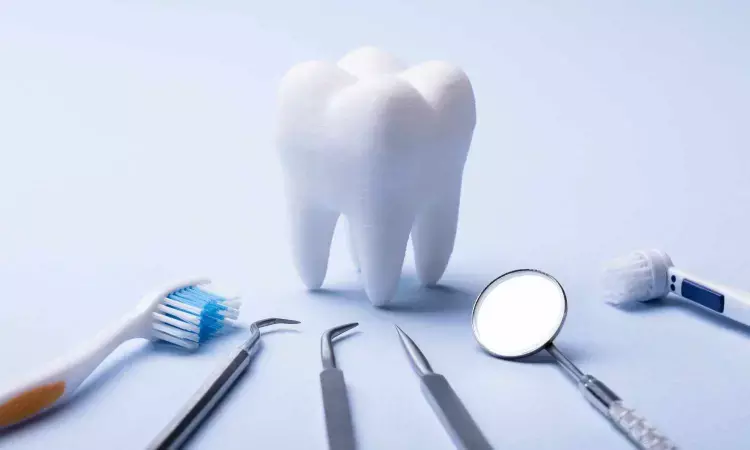- Home
- Medical news & Guidelines
- Anesthesiology
- Cardiology and CTVS
- Critical Care
- Dentistry
- Dermatology
- Diabetes and Endocrinology
- ENT
- Gastroenterology
- Medicine
- Nephrology
- Neurology
- Obstretics-Gynaecology
- Oncology
- Ophthalmology
- Orthopaedics
- Pediatrics-Neonatology
- Psychiatry
- Pulmonology
- Radiology
- Surgery
- Urology
- Laboratory Medicine
- Diet
- Nursing
- Paramedical
- Physiotherapy
- Health news
- Fact Check
- Bone Health Fact Check
- Brain Health Fact Check
- Cancer Related Fact Check
- Child Care Fact Check
- Dental and oral health fact check
- Diabetes and metabolic health fact check
- Diet and Nutrition Fact Check
- Eye and ENT Care Fact Check
- Fitness fact check
- Gut health fact check
- Heart health fact check
- Kidney health fact check
- Medical education fact check
- Men's health fact check
- Respiratory fact check
- Skin and hair care fact check
- Vaccine and Immunization fact check
- Women's health fact check
- AYUSH
- State News
- Andaman and Nicobar Islands
- Andhra Pradesh
- Arunachal Pradesh
- Assam
- Bihar
- Chandigarh
- Chattisgarh
- Dadra and Nagar Haveli
- Daman and Diu
- Delhi
- Goa
- Gujarat
- Haryana
- Himachal Pradesh
- Jammu & Kashmir
- Jharkhand
- Karnataka
- Kerala
- Ladakh
- Lakshadweep
- Madhya Pradesh
- Maharashtra
- Manipur
- Meghalaya
- Mizoram
- Nagaland
- Odisha
- Puducherry
- Punjab
- Rajasthan
- Sikkim
- Tamil Nadu
- Telangana
- Tripura
- Uttar Pradesh
- Uttrakhand
- West Bengal
- Medical Education
- Industry
Silane-Modified Fillers Enhance Dental Composite Performance, suggests study

Researchers have found in a new study that incorporating filler particles functionalized with silanes containing long alkyl spacers between the silyl and methacrylate groups offers a promising approach for creating packable dental composites. Further these materials demonstrate strong mechanical properties and a significant decrease in viscosity when heated, improving their clinical applicability.
A study was done to evaluate the influence of the nature of silane coupling agents on the consistency of dental composites at various temperatures. Silanes SI 1–4 were synthesized in one single step. They were characterized by 1H and 13C NMR spectroscopy. SI 1–4, as well as 3-methacryloyloxypropyltrimethoxysilane (MPTS), 8-methacryloyloxyoctyltrimethoxysilane (MOTS) and n-dodecyltrimethoxysilane were then used to functionalize a barium aluminum borosilicate glass filler (d50 = 1.0 µm). Silanizations were carried out in cyclohexane in the presence of a catalytic amount of n-propylamine.
Each silane was used in an equimolar amount. Composites containing 67 wt% of silanized fillers and packable composites exhibiting a similar consistency at room temperature were subsequently formulated. The consistency of the uncured composites was determined at various temperatures (23 °C, 30 °C, 50 °C and 60 °C) using a texture analyzer. The flexural strength and modulus of the cured composites were assessed according to ISO 4049.
Results: The structure of the silane was shown to strongly influence the consistency of composites. The spacer length between silyl and methacrylate groups, as well as the presence of a urea or a urethane moiety, were demonstrated to be key parameters. Heating of each composite resulted in a drop of the consistency. The decrease was however significantly stronger if coupling agents with long spacers were selected. Especially, the use of SI 3 provided a packable composite which exhibited a packable consistency at 30 °C and flowable consistency at 60 °C. Regarding mechanical properties, it was shown that the coupling agent must be able to copolymerize with the monomers of the organic matrix to obtain high flexural strength and modulus values.
The silanization of glass fillers using silanes bearing a long spacer was shown to have an additional advantage: packable composites having a higher filler content, and consequently improved flexural modulus, can be formulated. The use of filler particles functionalized with silanes containing long alkyl spacers between the silyl and methacrylate moiety is a promising strategy for the development of packable dental composites which exhibit good mechanical properties and a strong drop in consistency upon heating.
Reference:
Benjamin Grob, Nathan Wachter, Robert Liska, Yohann Catel, Heating of dental composites: The crucial role of the silane coupling agent on the consistency change, Dental Materials, 2025, ISSN 0109-5641, https://doi.org/10.1016/j.dental.2025.06.022.
Dr. Shravani Dali has completed her BDS from Pravara institute of medical sciences, loni. Following which she extensively worked in the healthcare sector for 2+ years. She has been actively involved in writing blogs in field of health and wellness. Currently she is pursuing her Masters of public health-health administration from Tata institute of social sciences. She can be contacted at editorial@medicaldialogues.in.
Dr Kamal Kant Kohli-MBBS, DTCD- a chest specialist with more than 30 years of practice and a flair for writing clinical articles, Dr Kamal Kant Kohli joined Medical Dialogues as a Chief Editor of Medical News. Besides writing articles, as an editor, he proofreads and verifies all the medical content published on Medical Dialogues including those coming from journals, studies,medical conferences,guidelines etc. Email: drkohli@medicaldialogues.in. Contact no. 011-43720751


